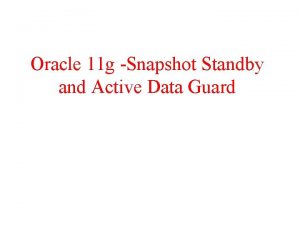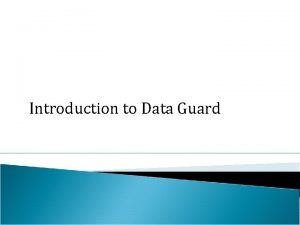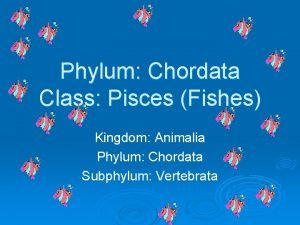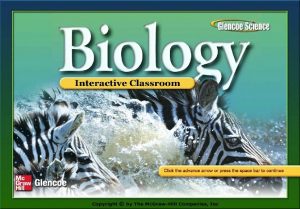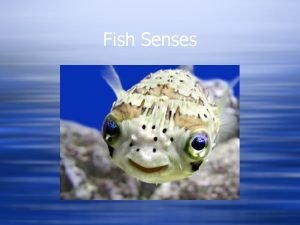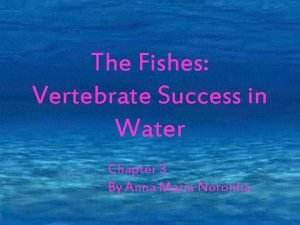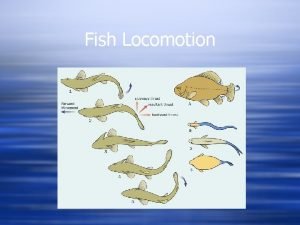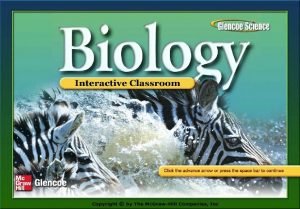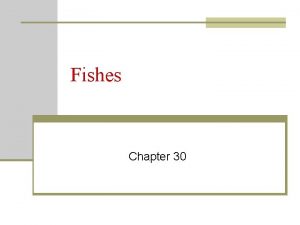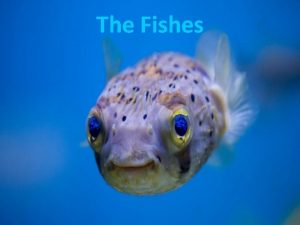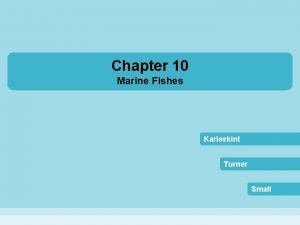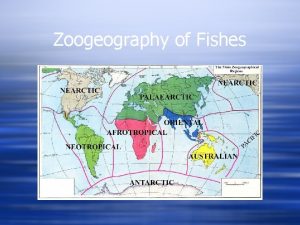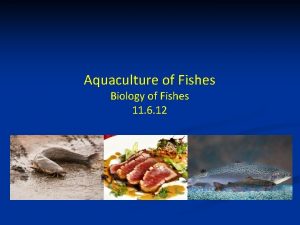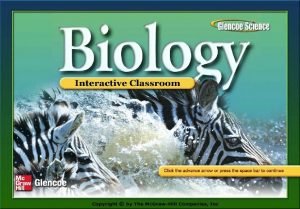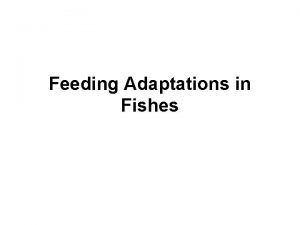Parental Caring Fishes Parental Caring Fishes Guard their











- Slides: 11

Parental Caring Fishes

Parental Caring Fishes • • • Guard their eggs and young ones. Produce only very few numbers of eggs. Exhibit territorial behaviour. Elaborate courtship behaviour. Guarders are divided into 2 types

Substratum Spawners • 4 categories depending on the substratum Lithophils (Rock spawners) • Spawn on flat rocks • Males clean the substratum • Courtship and fertilization, on the clean substratum • e. g. gobies and puffer fish Phytophils (Plant spawners) • Deposit their eggs on plants. e. g. Cat fishes

Aerophils (Terrestrial spawners) • Deposit their eggs on the underside of the overlying rock or plant (above the water level) • Spraying or splashing the water by males over the eggs to keep the eggs moist. • e. g. Characin spp. Pelagophils • Released in open water • Eggs are sticky • Eggs are always found in clusters • Parental care is exhibited by both male and female fish • Climbing perch

Nest Spawners Lithophils • They use gravel; for building nests and guarded by males • e. g. cichlids Phytophils • Build their nests by using plant material • e. g. Bowfin. Psammophils • Build their nests on sandy bottom. • e. g. Cichlosoma spp.

Aphrophils • Build their nest by bubbles and froth • e. g. Siamese fighter and Gourami Speleophils • Build their nests in natural or constructed cavities of burrows. • e. g. Cat fishes.

Burrow Nest Spawners Polyphils • Build their nests with miscellaneous materials. • e. g. Arowana. Ariadnophils • Build their nests by using plant materials, held together by secretion of kidney, once the fertilization is over, males drive away the female • e. g. Stickle backs. Actinariophils • Make use of sea anemones. • Lay their eggs in and around sea anemones to avoid predation. • e. g. Amphiprion (clown fish)

Bearers External Carriers Transfer brooders • Eggs are carried by various means to deposited elsewhere in a suitable area. • e. g. Cyprinodontids Forehead brooders • After spawning female transfer the eggs on to the depression or hook like structure on the forehead of males. • e. g. Kurtidae

Mouth brooders • Carry their eggs in the mouth till the young ones hatch out. • Young ones move around their parents. If find any danger, jumps into the mouth of the mother Skin brooders • Fertilized eggs are attached on to the skin. • Once the fertilization is over, Eggs get attached to the spongy skin of the female. • e. g. south american cat fish Pouch brooders • Deposit the eggs in a cutaneous pouch • In the case of male sea horse (Hippocampus), females deposit the fertilized eggs into the pouches of the males.

Internal Bearers Ovi-ovoviviparous • Fertilization is internal • incubation is external • No nourishment from the parents. • e. g. sharks and skates Ovoviviparous • Fertilization internal • incubation is also internal without any nutrient supply from the females • they get protection • e. g. many sharks and skates and living fossil fish, Latimeria chalumnae

Viviparous • Fertilization internal • incubation is internal • get nutrient supply from females. • e. g. Carcharinidae and poeciliidae
 Caring occasion/caring moment
Caring occasion/caring moment Upper hood guard and full diameter saw guard
Upper hood guard and full diameter saw guard Upper hood guard and full diameter saw guard
Upper hood guard and full diameter saw guard Snapshot standby
Snapshot standby Oracle coast guard
Oracle coast guard Romeo and juliet two households
Romeo and juliet two households Phylum pisces
Phylum pisces Chapter 28 section 1: fishes study guide answer key
Chapter 28 section 1: fishes study guide answer key Senses
Senses Fish vs fishes
Fish vs fishes Ostraciform
Ostraciform Concept mapping chapter 28 fishes and amphibians
Concept mapping chapter 28 fishes and amphibians



